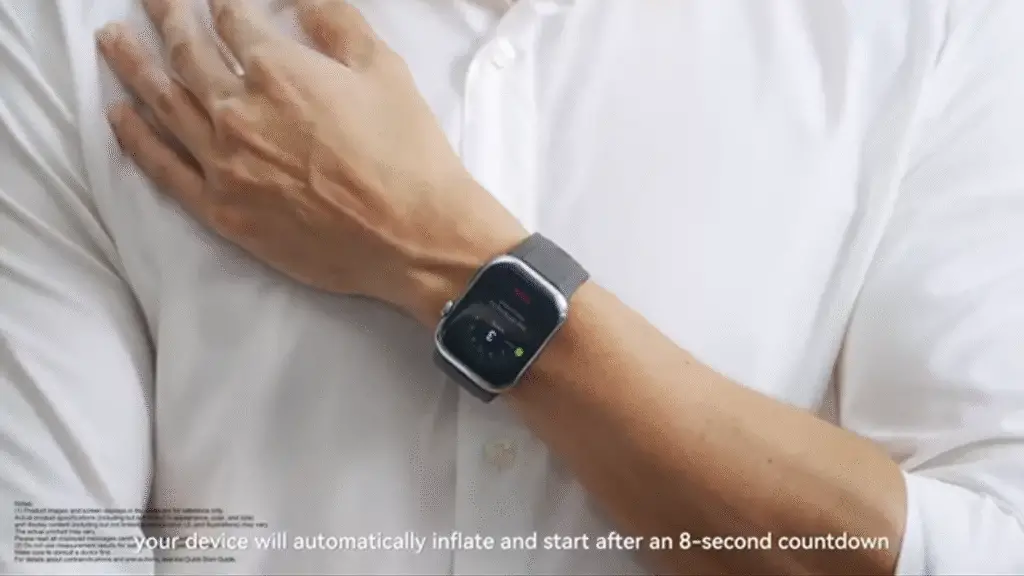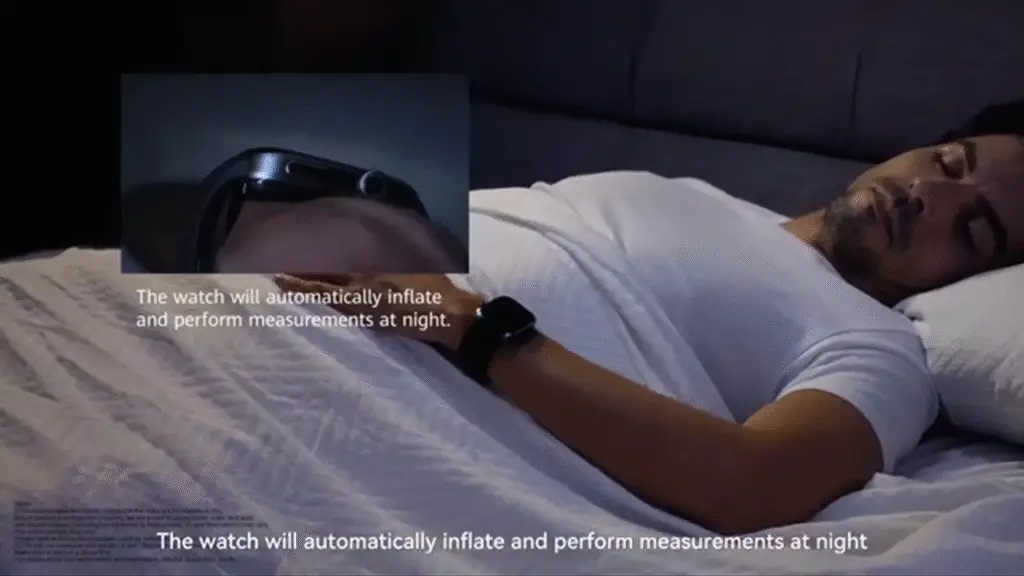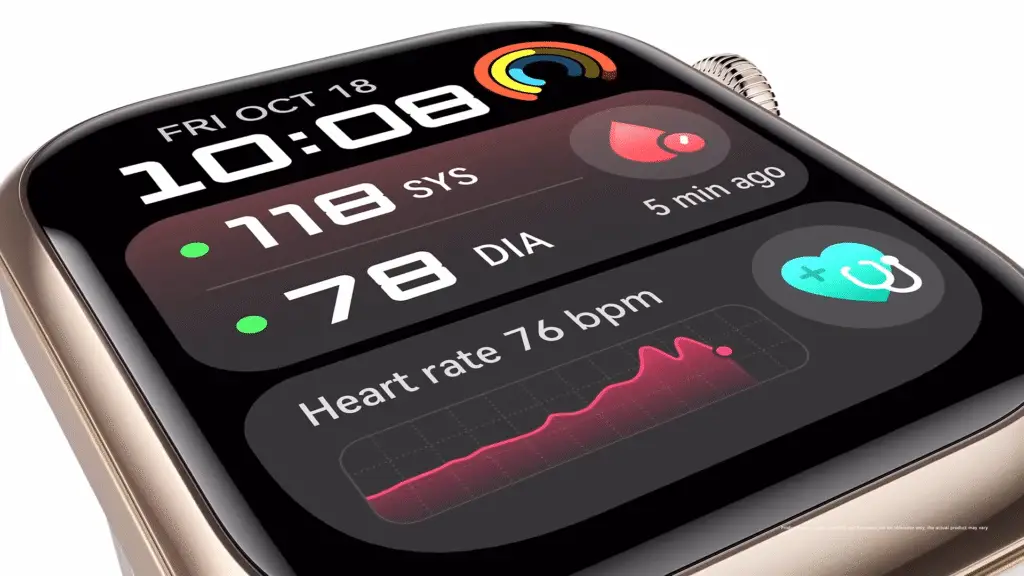The Future of Personal Health on Your Wrist: An In-depth Review of the Huawei Watch D2 and its Revolutionary Ambulatory Blood Pressure Monitoring
A new era of personal health management has dawned, and it rests comfortably on your wrist. The Huawei Watch D2, a successor to the groundbreaking Watch D, has emerged not merely as a smartwatch but as a certified medical device poised to revolutionize how we monitor one of the most critical indicators of our well-being: blood pressure. This is not another wearable offering estimations based on optical sensors; the Watch D2 brings the validated technology of a cuff-based sphygmomanometer to a sleek, wearable form factor, complete with 24-hour ambulatory blood pressure monitoring (ABPM). In this exhaustive review, we will delve deep into every facet of the Huawei Watch D2, from its innovative technology to the real-world user experience, its myriad of other health features, and where it stands in the competitive landscape of smartwatches. For anyone serious about their cardiovascular health, or for those simply curious about the next frontier in wearable technology, the Huawei Watch D2 demands a closer look.

A New Paradigm in Blood Pressure Monitoring: The Advent of Ambulatory Blood Pressure Monitoring in a Smartwatch
For decades, monitoring blood pressure at home has been a periodic affair, a snapshot in time that can be influenced by a myriad of factors, from the stress of the day to the simple act of sitting down for a measurement. The “white coat hypertension” phenomenon, where blood pressure readings are artificially elevated in a clinical setting, is a well-documented challenge. Ambulatory Blood Pressure Monitoring (ABPM) has long been the gold standard for a comprehensive understanding of blood pressure dynamics, involving a portable device that takes readings at regular intervals over a 24-hour period. However, traditional ABPM devices are often cumbersome and disruptive to daily life.
This is where the Huawei Watch D2 makes its revolutionary entrance. It is the first smartwatch to integrate a miniaturized, yet medically certified, inflatable cuff and pump system directly into the watch and its strap. This allows for on-demand blood pressure readings that mimic the accuracy of a traditional upper-arm cuff, and more importantly, it enables a true 24-hour ambulatory blood pressure monitoring plan.
The implications of this technology are profound. For individuals with diagnosed hypertension, it offers a continuous and detailed picture of their blood pressure throughout the day and night, providing invaluable data for their healthcare providers to tailor treatment plans. For those at risk of hypertension, it serves as an early warning system, detecting trends and patterns that might otherwise go unnoticed. And for the health-conscious individual, it provides an unprecedented level of insight into how their lifestyle choices—from diet and exercise to stress and sleep—impact their cardiovascular health.

Design and Display: A Fusion of Medical Technology and Modern Aesthetics
At first glance, the Huawei Watch D2 presents a refined and modern aesthetic. Available in classic Black and a sophisticated Gold, the watch features a rectangular case with rounded edges, exuding a sense of understated elegance. The aluminum alloy frame is both lightweight and durable, ensuring comfort for all-day wear.
The centerpiece of the design is the vibrant 1.82-inch AMOLED display. With a resolution of 480 x 408 pixels and a pixel density of 347 PPI, the screen is sharp, bright, and easy to read in various lighting conditions. Text is crisp, and colors are vivid, making it a pleasure to interact with notifications, health data, and the array of available watch faces. A rotating crown on the side of the watch provides a tactile and intuitive way to navigate through menus and options, complemented by a secondary function button that can be customized for quick access to frequently used features.
The true innovation in the Watch D2’s design, however, lies in its strap. Integrated seamlessly within the strap is a miniaturized airbag that inflates to take blood pressure readings. This engineering marvel is what sets the Watch D2 apart. The strap itself is crafted from a comfortable and skin-friendly fluoroelastomer or a composite leather option, designed to be worn snugly without causing irritation. The watch comes with two sizes of straps and a measuring tool to ensure a proper fit, which is crucial for the accuracy of the blood pressure measurements.
While the integration of the airbag and pump system does make the Watch D2 slightly thicker and bulkier than a standard smartwatch, the trade-off for its medical-grade functionality is one that many users will find well worth it. It remains a remarkably compact and wearable device, especially when compared to traditional ambulatory blood pressure monitors.

The Heart of the Matter: A Deep Dive into the Ambulatory Blood Pressure Monitoring Experience
The headline feature of the Huawei Watch D2 is, without a doubt, its ambulatory blood pressure monitoring. Setting up an ABPM plan is straightforward through the Huawei Health app. Users can choose to have their blood pressure measured at set intervals throughout the day and night, typically every 30 or 60 minutes.
During the day, the watch will vibrate to notify you that a measurement is about to be taken. For an accurate reading, it’s essential to adopt the correct posture: sitting down with your arm resting at heart level, similar to how you would take a reading with a traditional cuff. The watch will guide you through this process.
The magic of the ABPM feature truly shines during the night. The Watch D2 will automatically and silently inflate the cuff to take readings while you sleep. This provides a detailed picture of your nocturnal blood pressure, a critical factor in assessing cardiovascular risk that is often missed with traditional monitoring methods.
The data collected is then synthesized in the Huawei Health app, presenting you with a comprehensive report of your 24-hour blood pressure trends. This includes your average systolic and diastolic pressures, your pulse rate, and detailed graphs showing the fluctuations throughout the day and night. This information can be easily shared with your doctor, providing them with a wealth of data to make informed decisions about your health.

Accuracy and Reliability: The User and Expert Consensus
The paramount question for a device like the Huawei Watch D2 is its accuracy. The watch has received medical device certification in several regions, a testament to its reliability. In real-world usage, both expert reviewers and everyday users have reported impressive accuracy when comparing the Watch D2’s readings to those from traditional sphygmomanometers. The margin of error is generally found to be within a clinically acceptable range, making it a reliable tool for regular monitoring.
However, it’s crucial to understand that user adherence to the correct measurement posture during the day is key to achieving this accuracy. Movement or an incorrect arm position can lead to failed or inaccurate readings. The watch is designed to detect these anomalies and will often prompt the user to try again.
For the nocturnal readings, where the user is asleep and posture cannot be consciously controlled, the watch’s algorithms are designed to account for these variables to a certain extent. While there might be occasional failed readings due to movement, the sheer volume of data collected overnight provides a valuable overall picture of nocturnal blood pressure.
Beyond Blood Pressure: A Comprehensive Suite of Health and Fitness Features
While the ambulatory blood pressure monitoring is the star of the show, the Huawei Watch D2 is far from a one-trick pony. It is a comprehensive health and wellness companion, packed with a suite of sensors and features to monitor various aspects of your well-being.
- Electrocardiogram (ECG): The Watch D2 features a high-performance ECG sensor that allows you to take an electrocardiogram on demand. By simply placing your finger on the electrode on the side of the watch for 30 seconds, you can generate an ECG waveform that can help screen for common heart rhythm abnormalities such as atrial fibrillation. The data can be saved and shared with your doctor for further analysis.
- SpO2 Monitoring: The watch can continuously monitor your blood oxygen saturation (SpO2) levels, an important indicator of respiratory health. This can be particularly useful for individuals with sleep apnea or other respiratory conditions, as well as for those who engage in high-altitude activities.
- Heart Rate Monitoring: The Watch D2 provides continuous heart rate monitoring, tracking your heart rate throughout the day and during workouts. It will alert you to abnormally high or low heart rates and provides detailed data on your resting heart rate and heart rate zones during exercise.
- Skin Temperature: The inclusion of a skin temperature sensor adds another layer of health monitoring. While not a direct measure of core body temperature, it can help identify trends that may indicate the onset of illness.
- Sleep Tracking: The watch offers detailed sleep tracking, breaking down your sleep into light, deep, and REM stages. It also provides a sleep score and personalized recommendations to improve your sleep quality.
- Stress Monitoring: The Watch D2 can track your stress levels throughout the day, providing insights into your body’s response to daily pressures. Guided breathing exercises are available on the watch to help you manage moments of high stress.
- Fitness Tracking: For the fitness enthusiasts, the Watch D2 supports over 80 workout modes, from running and cycling to swimming and strength training. It provides detailed metrics for each activity, including distance, pace, calories burned, and more. The built-in GPS ensures accurate tracking of your outdoor workouts.

The Smartwatch Experience: Functionality and Limitations
As a smartwatch, the Huawei Watch D2 offers a solid, albeit not a market-leading, experience. It excels at the fundamentals, providing reliable notifications for calls, messages, and apps from your connected smartphone. The watch also supports Bluetooth calling, allowing you to answer and make calls directly from your wrist, a convenient feature when your phone is not readily accessible.
The user interface is intuitive and responsive, making it easy to navigate through the various apps and settings. The watch face store offers a wide variety of designs to personalize the look of your device.
However, it’s in the realm of third-party app support and advanced smartwatch features where the Watch D2’s limitations become apparent. The app ecosystem is not as extensive as that of Apple’s watchOS or Google’s Wear OS. This means you won’t find the same breadth of third-party apps available for download.
Furthermore, while the watch supports NFC, the availability of contactless payments through Huawei Wallet is limited to certain regions. This is a significant drawback for users who have become accustomed to the convenience of paying with their smartwatch.
The User Experience: Living with the Huawei Watch D2
The true test of any wearable is how it integrates into daily life. User feedback on the Huawei Watch D2 has been largely positive, with many praising its groundbreaking health features and overall usability.
Comfort and Wearability
Despite its slightly larger size, most users find the Watch D2 comfortable to wear throughout the day and even during sleep. The soft, flexible strap and the lightweight design contribute to a positive wearing experience. However, some users with smaller wrists have noted that the watch can feel a bit bulky.
The Ambulatory Blood Pressure Experience in the Real World
Users who have a specific need for regular blood pressure monitoring have lauded the Watch D2 as a game-changer. The convenience of having an accurate and reliable blood pressure monitor on their wrist at all times has empowered them to take a more proactive role in managing their health.
The daytime reminders to take readings have been found to be helpful in establishing a consistent monitoring routine. The silent and automatic nocturnal readings have been particularly praised, as they provide a level of insight that was previously only available through cumbersome and expensive medical equipment.
Some users have noted a learning curve in consistently achieving the correct posture for daytime readings, which can initially lead to some failed measurements. However, with practice, this becomes second nature.
Battery Life: A Tale of Two Usage Scenarios
The battery life of the Huawei Watch D2 is highly dependent on how you use its features. With typical usage, including continuous heart rate monitoring, sleep tracking, and receiving notifications, the watch can last for up to 6-7 days on a single charge, which is impressive for a smartwatch with such a vibrant display.
However, enabling the 24-hour ambulatory blood pressure monitoring plan significantly impacts battery life. With readings being taken at regular intervals, the battery will typically last for about a full day. This means that if you plan to use the ABPM feature continuously, you will need to charge the watch daily. While this may be a drawback for some, many users who require this level of monitoring find it a worthwhile trade-off for the invaluable health data they receive.
Pros and Cons: A Balanced Perspective
Pros:
- Revolutionary Ambulatory Blood Pressure Monitoring: The first smartwatch to offer medically certified, 24-hour ambulatory blood pressure monitoring with an integrated inflatable cuff.
- Accurate Health Monitoring: Provides reliable and accurate measurements of blood pressure, ECG, SpO2, heart rate, and more.
- Comprehensive Health Insights: The Huawei Health app provides detailed reports and trend analysis of your health data.
- Premium Design and Display: A sleek and stylish design with a vibrant and easy-to-read AMOLED display.
- Excellent Battery Life (in standard mode): Can last up to a week on a single charge with typical usage.
- Comfortable for All-Day Wear: The lightweight design and skin-friendly strap make it comfortable to wear 24/7.
- Medical Device Certification: Provides peace of mind regarding the accuracy and reliability of its key health features.
Cons:
- Limited Third-Party App Ecosystem: Lacks the extensive app support of competitors like the Apple Watch and Wear OS devices.
- Limited Contactless Payment Availability: Huawei Wallet is not as widely supported as Apple Pay or Google Pay.
- Shorter Battery Life with ABPM: Continuous ambulatory blood pressure monitoring reduces battery life to about a day.
- Slightly Bulkier Design: The integration of the pump and airbag makes it slightly larger than standard smartwatches.
- Requires Correct Posture for Accurate Daytime Readings: User adherence to the correct posture is crucial for accurate blood pressure measurements.
Recommendations: Who is the Huawei Watch D2 For?
The Huawei Watch D2 is not a smartwatch for everyone. Its unique feature set and its limitations make it an ideal choice for specific user profiles.
- Individuals with Hypertension or at Risk of Hypertension: For this group, the Huawei Watch D2 is an unparalleled device. The ability to continuously and accurately monitor blood pressure in a convenient and wearable form factor is a game-changer for managing their condition and sharing data with their healthcare providers.
- The Health-Conscious Individual: For those who are proactive about their health and want the most comprehensive set of health monitoring tools available in a smartwatch, the Watch D2 is a compelling option. The combination of ABPM, ECG, SpO2, and other health sensors provides an unprecedented level of insight into their overall well-being.
- Users Prioritizing Health Over Smartwatch Features: If your primary reason for wanting a smartwatch is to monitor your health, and you are less concerned with having a wide array of third-party apps or contactless payments, then the Watch D2 is an excellent choice.
The Huawei Watch D2 is not recommended for:
- The Power Smartwatch User: If you rely heavily on a wide range of third-party apps, extensive notification interactivity, and seamless contactless payments, you will likely find the Watch D2’s smartwatch capabilities to be somewhat limited compared to offerings from Apple and Google.
- Those Seeking a Purely Fashion-Focused Wearable: While the Watch D2 is well-designed, its slightly bulkier build and focus on health features may not appeal to those who prioritize a slim and minimalist aesthetic above all else.

The Final Verdict: A Landmark Achievement in Wearable Health Technology
The Huawei Watch D2 is more than just an incremental update to its predecessor; it is a landmark achievement in the field of wearable health technology. By successfully integrating a medically certified ambulatory blood pressure monitoring system into a stylish and comfortable smartwatch, Huawei has set a new standard for what is possible in personal health management.
While it may not have the same extensive app ecosystem or the universal contactless payment support of some of its competitors, its unparalleled health monitoring capabilities, particularly its revolutionary ABPM feature, place it in a class of its own.
For individuals who are serious about their cardiovascular health, the Huawei Watch D2 is not just a gadget; it is a potentially life-changing tool. It empowers users with a level of insight into their own bodies that was once confined to the clinic. It is a testament to the power of technology to not only connect us but also to keep us healthy. The Huawei Watch D2 is, without a doubt, a glimpse into the future of personal health, and that future is now.
